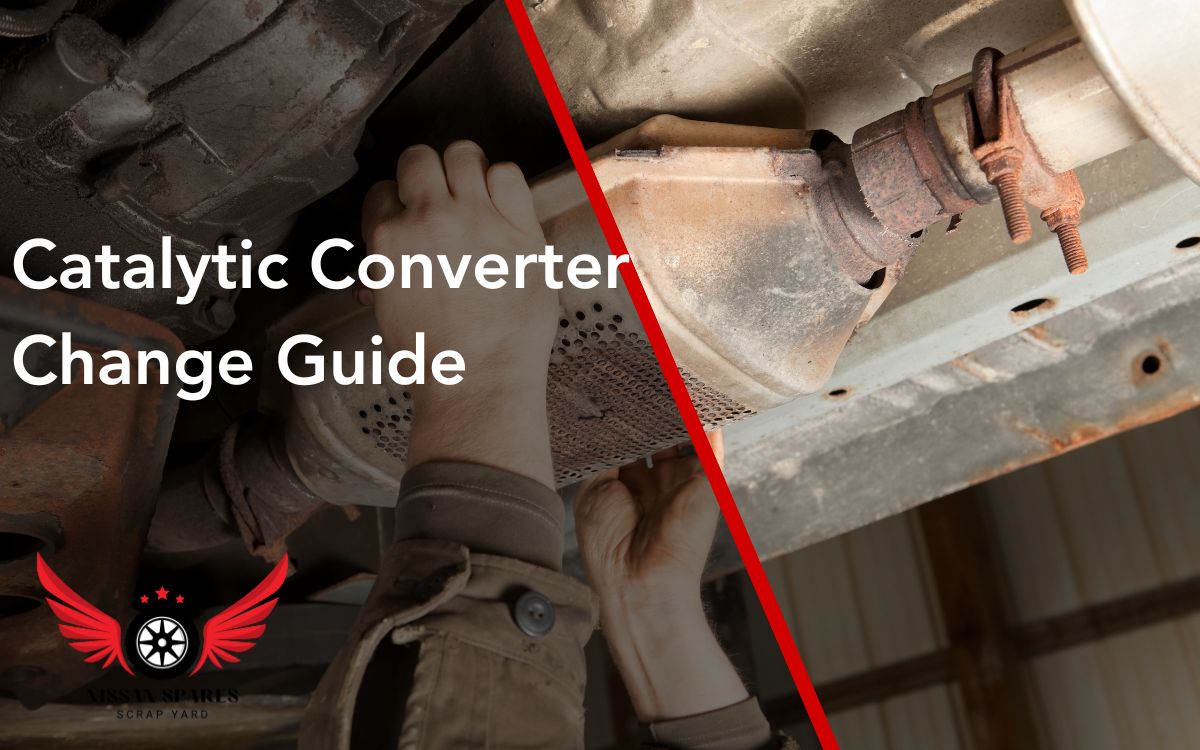Catalytic Converter Replacement Guide
The catalytic converter is a crucial component of your vehicle’s exhaust system, playing a vital role in reducing harmful emissions. When this essential part fails or becomes damaged, it can lead to increased pollution, poor engine performance, and potential legal issues. This comprehensive guide will walk you through the process of replacing your vehicle’s catalytic converter, offering insights and tips for a successful replacement job.
Key Takeaways:
- Emissions Reduction: Catalytic converters can reduce harmful emissions by up to 90%.
- Lifespan: The average catalytic converter lasts between 120,000 to 160,000 km.
- Theft Risk: Catalytic converter theft has increased significantly, with over 64,000 stolen in the U.S. in 2022.
Understanding Catalytic Converters: Function and Importance
Before diving into the replacement process, it’s essential to understand how catalytic converters work:
- Convert harmful exhaust gases into less harmful substances
- Use precious metals (platinum, palladium, rhodium) as catalysts
- Help vehicles meet emissions standards and regulations
Signs of a failing catalytic converter include:
- Illuminated check engine light
- Reduced engine performance and fuel efficiency
- Unusual exhaust odors
- Failed emissions test
Regular maintenance, including catalytic converter checks, is as important as other vehicle maintenance tasks like spark plug replacement.
Catalytic Converter Replacement Costs
The cost of replacing a catalytic converter can vary significantly:
- Average replacement costs range from R14,000 to R66,000 (based on $933 to $4,414 USD)
- Factors affecting cost include vehicle make/model, converter type, and labor rates
- OEM converters are generally more expensive than aftermarket options
Consider the long-term benefits of using high-quality parts when budgeting for replacement.
Tools and Materials Needed for Catalytic Converter Replacement
Gather these essential tools and materials before starting:
- New catalytic converter (OEM or quality aftermarket)
- Jack and jack stands
- Socket set and wrenches
- Penetrating oil
- Wire brush
- Safety glasses and gloves
- Exhaust gaskets and hardware (if required)
Ensure you have the correct converter for your vehicle’s make, model, and emissions requirements.
Step-by-Step Catalytic Converter Replacement Guide
Follow these steps for a successful catalytic converter replacement:
1. Prepare the Vehicle
- Park on a level surface and allow the exhaust system to cool completely
- Raise and secure the vehicle on jack stands
- Spray penetrating oil on bolts and connections
2. Remove the Old Converter
- Locate the catalytic converter in the exhaust system
- Remove oxygen sensors if they’re attached to the converter
- Unbolt or cut the old converter from the exhaust system
3. Install the New Converter
- Clean the mating surfaces with a wire brush
- Position the new converter and secure it with bolts or clamps
- Reinstall oxygen sensors (use anti-seize compound on threads)
4. Finalize the Installation
- Check all connections for proper tightness
- Lower the vehicle
- Start the engine and check for exhaust leaks
For more detailed information on maintaining your vehicle’s emissions system, check our guide on oxygen sensor replacement DIY.
Catalytic Converter Cost Comparison Table
| Aspect | OEM Converter | Aftermarket Converter |
|---|---|---|
| Cost | Higher (R30,000 – R66,000) | Lower (R14,000 – R30,000) |
| Fitment | Exact fit for specific model | May require modifications |
| Warranty | Typically longer | Varies by manufacturer |
| Performance | Matches original specifications | May vary in quality and efficiency |
Maintenance Tips for Prolonging Catalytic Converter Life
To maximize the lifespan of your catalytic converter:
- Regular Engine Maintenance: Keep your engine tuned and running efficiently
- Use Quality Fuel: Avoid fuel containing high levels of sulfur or lead
- Address Check Engine Lights Promptly: Early diagnosis can prevent converter damage
- Avoid Short Trips: Allow the converter to reach operating temperature regularly
Regular maintenance, including tasks like air filter changes, contributes to overall engine health and converter longevity.
Legal and Environmental Considerations
When replacing your catalytic converter, keep in mind:
- Removing or tampering with a catalytic converter is illegal in many jurisdictions
- Ensure the replacement converter meets local emissions standards
- Properly recycle old converters due to their precious metal content
- Consider anti-theft devices to protect your new converter
For more information on maintaining your vehicle’s fuel system, which impacts converter performance, check our fuel injector replacement tutorial.
Conclusion: Ensuring Efficient Emissions Control
Replacing your vehicle’s catalytic converter is a significant maintenance task that offers several benefits:
- Reduced harmful emissions (up to 90% reduction)
- Improved engine performance and fuel efficiency
- Compliance with emissions regulations
- Potential increase in vehicle resale value
While the replacement process can be complex, following this guide and using quality parts can help ensure a successful outcome. If you’re unsure about any step, consider seeking professional assistance to avoid costly mistakes.
For more advanced maintenance tasks, consider learning about engine air intake cleaning to further optimize your vehicle’s performance and emissions control.
FAQ
How often should I replace my vehicle’s catalytic converter?
Catalytic converters typically last between 120,000 to 160,000 km. However, they may need replacement sooner if damaged or contaminated.
Can I drive with a faulty catalytic converter?
While you can drive with a faulty converter, it’s not recommended. It can lead to reduced performance, increased fuel consumption, and potential engine damage if left unaddressed.
How can I prevent catalytic converter theft?
Install anti-theft devices, park in well-lit areas, and consider etching your vehicle’s VIN on the converter to deter thieves and aid in recovery if stolen.
Will a new catalytic converter improve my vehicle’s performance?
If your old converter was clogged or malfunctioning, a new one can restore lost performance and fuel efficiency. However, it won’t provide additional performance beyond the vehicle’s original specifications.
Can I install a used catalytic converter?
While it’s possible, it’s not recommended. Used converters may have reduced efficiency and a shorter lifespan. Additionally, it may not meet current emissions standards.


